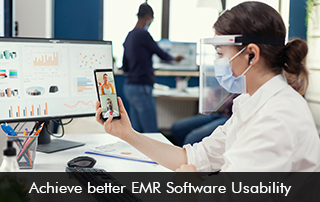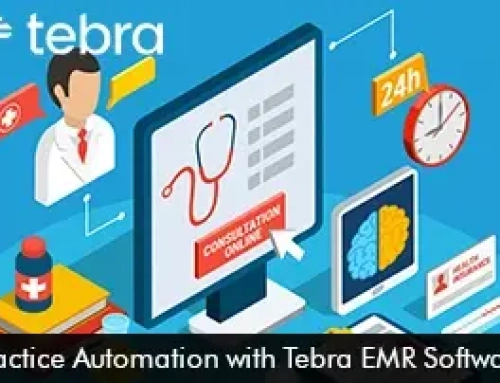Physician burnout is a grave issue in the United States. Low Electronic Medical Records (EMR) Software usability can increase burnout levels and cause physician satisfaction. EHR Software has been widely implemented, today 96 percent of US hospitals use these robust systems to streamline and automate daily clinical, administrative, and financial tasks.
What is EHR Software Usability?
The term “usability” in Electronic Medical Records software describes how well and quickly healthcare providers can use the software program to accomplish their jobs. EMR systems with high usability guarantee an easy-to-use interface, simple navigation, and seamless workflow assistance for the user. This includes features like simple data entry, rapid patient information access, and little interruptions to patient care.
UX Design and Electronic Health Records Software Usability
The principle of the User Experience (UX) design in EHR Software is based on creating efficient and user-friendly interaction between the provider and the software system. Customized EMR Software has a user-centered design to meet the unique requirements of different medical specialists, hence meeting preferences and keeping users satisfied.
How to Achieve EMR Software Usability?
User-friendly Electronic Health Records Software systems create efficient workflows and empower healthcare providers to deliver high-quality patient care.
For better EMR Software usability the following steps need to be taken:
UCD
User-centered design in the EHR Software is critical to boost the system’s overall usability. To achieve this EMR Software vendors can involve end users such as clinicians, nurses, and administrative staff in the design and development of the software system. To understand the preferences and workflow requirements users should be surveyed and interviewed to get their feedback. This can help address any pain points that come in the way while the provider is using the electronic medical records software.
Simple and intuitive Interface
Software providers should create a simple, uncomplicated interface that reduces complexity. Make sure that common tasks can be completed with the fewest clicks and navigation possible by utilizing well-known design principles. User-friendly EMR Software interfaces can improve physician satisfaction, keep clinician burnout at bay, and even enhance patient care.
Regular Training and Support
Prominent EMR software providers, like AdvancedMD EHR software and athenahealth EMR software, offer users thorough training and continuous support. This includes access to help desks or support teams for assistance with any problems that may arise, user manuals, and tutorials. Training ensures that staff personnel can proficiently use the EHR Software and get the maximum benefits out of it.
Regular Software Updates
To consistently improve the EMR System, software vendors roll out software updates. These updates can help address any usability problems and enrich the user experience by keeping it running fast.
Moving Ahead
After deploying intuitive Electronic Medical Records (EMR) Software it is important to upgrade the usability. Fortunately, usability can be improved with the help of health IT staff or the efforts of the EHR Software provider. Basic design issues and information support problems can be addressed by upgrading software features, support, and training.








